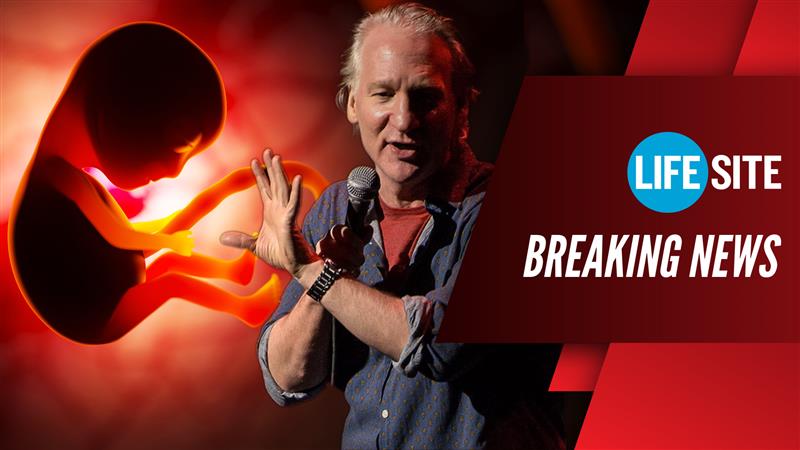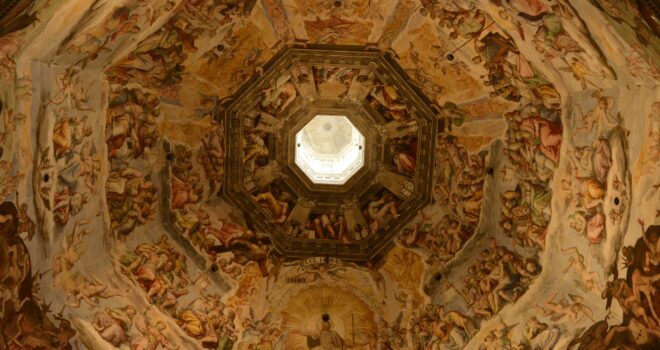Catholicism has entered a dark period in America. The Church’s disgraceful handling of sexual-abuse scandals—with shocking new reports routinely emerging—plays a direct role in shrinking congregations and closed churches, especially in the Rust Belt. These revelations have shown an institution that protected its power while victimizing or dismissing the powerless. Already confronting dwindling vocations, aging priests, and fewer active members, the Church in America is challenged as never before, on a path to irrelevancy and disrepute. If counted as a denomination, ex-Catholics would make up the country’s second-largest religious affiliation.
The Church reached a grim crossroads last year. In August, a Pennsylvania grand jury report, released by the state attorney general’s office, detailed how bishops and clergy covered up the abuse of children by more than 300 priests over a period of 70 years. The report identified more than 1,000 victims and cataloged sadistic examples of abuse in six of the state’s eight dioceses. “Despite some institutional reform, individual leaders of the church have largely escaped public accountability,” the grand jury wrote. “Priests were raping little boys and girls, and the men of God who were responsible for them not only did nothing; they hid it all. For decades.”
The nearly 900-page report, with its unspeakable details, recalled other recent Church scandals. In 2002, the Boston Globe published an investigative series revealing the widespread abuse of minors by priests. The reporting, later the subject of the 2015 Academy Award–winning film Spotlight, also exposed the Church’s extensive cover-ups. The latest controversy, in turn, revealed how Church leadership continued to conceal its malfeasance and insulate itself against accountability.
Beloved parishes, supported for decades by devout Catholic families, were sites of monstrous acts. While congregants sometimes knew about, or at least suspected, cases of abuse or questionable behavior, they remained poorly prepared to absorb the magnitude of the crimes. In the months since the grand jury’s findings, social media platforms, especially Facebook, have become outlets for Catholics to express their disgust. New reports are inspiring survivors of abuse to share their stories. The U.S. Justice Department and numerous state attorneys general have launched investigations into additional dioceses.
In the American Rust Belt, empty pews and lean collection baskets are symptomatic not only of Catholics’ intensifying sense of disillusionment but also of the region’s changing socioeconomics. Church scandals have worsened Rust Belt Catholics’ social, cultural, and political discontent. But grassroots movements have also emerged to hold Rust Belt dioceses accountable or to try to save storied churches. The Church has long played an economic role in these struggling neighborhoods, and its architecture has defined communities throughout the Northeast and upper Midwest. While American Catholicism faces a troubled future, its retrenchment in the Rust Belt has a particular resonance, deepening the region’s fragmentation and raising the question of what, if anything, could replace its presence.
The Church is collapsing in a region that remains disproportionately Catholic. As Charles R. Morris noted in American Catholic, an overview of the U.S. Church, the Rust Belt historically is the “Catholic belt.” It was here where immigrants, particularly nineteenth-century Germans and Irish, cut the ribbon on American Catholicism. Throughout the Northeast and Midwest, they inhabited mill towns, coal regions, and industrial cities where parishes became the center of spiritual, fraternal, and temporal life.
American Catholicism grew rapidly—by 1900, Catholics made up the nation’s largest religious denomination. And with growth came bureaucratization. “Bishops of big dioceses were captains of major bricks-and-mortar-intensive business enterprises,” Morris writes. Dioceses transformed America’s urban landscape through real estate, with bishops presiding over the opening of countless ethnic-based parishes that marked neighborhood boundaries. Churches became elaborate structures, paying tribute to Old World cultures through large statues, ornate altars, and imported stained-glass windows. Clericalism prevailed, with priests enjoying nearly autocratic rule over mammoth parishes, which included rectories, convents, and K–12 schools. Catholic culture predominated in the Rust Belt’s urban neighborhoods through the mid-twentieth century.
In the mid-1960s, the Second Vatican Council convened in Rome to spark spiritual renewal and modernize the Church. The resulting liturgical shift significantly affected American Catholicism, especially as suburban communities expanded beyond Rust Belt cities. Urban neighborhoods declined, with newer parishes opening outside city limits. The Church maintained its institutional strength, but Catholics eased their practice of the faith. With changing times, many older urban churches became casualties of geography, demographics, population loss, and financial insolvency.
While fewer Catholics attend Mass, historic parishes remain a spiritual and emotional refuge for those who do. In recent years, reporters have documented the malaise, economic insecurity, and political angst of Americans living in postindustrial cities. These residents are often descended from European immigrants, who constructed breathtaking churches with manual labor and limited financial means. But their churches have struggled or closed.
These practicing Catholics bear the emotional and financial costs of the Church’s sins. According to Bishop Accountability, a nonprofit that monitors allegations of clerical abuse, the Church and its insurance companies have doled out over $3.8 billion nationwide in lawsuits and claims since the 1980s. The payouts involved cases filed by more than 8,600 alleged victims of abuse, dating to the 1950s. Financially strapped dioceses have closed or consolidated many parishes. In the past 15 years, 19 Catholic dioceses and religious orders—many in the Rust Belt—have filed for bankruptcy protection.
Scandalous revelations keep emerging. In November, the Boston Globe and the Philadelphia Inquirer reported that more than 130 bishops failed to respond to abuse in their dioceses, with at least 15 bishops accused of abuse or harassment themselves. Among the accused was Cardinal Theodore McCarrick, the former archbishop of Washington, D.C., whose unseemly behavior ultimately engulfed the Vatican in America’s scandals. Most shocking were the Church’s futile, if not farcical, attempts at reform. Following the Boston Archdiocese scandal in 2002, U.S. bishops met in Dallas to pass a charter vowing to remove predator priests. Of the eight bishops assigned to draft the so-called Dallas Charter, five had been accused of mishandling abuse claims—and they ensured their own exclusion from the new child-protection measures, thus protecting their Church-financed retirements.
As bishops shielded themselves, they presided over the diocesan restructuring of parishes. Canon law gives bishops the authority to open or close parishes or churches. Often, bishops restructure parishes without closing church buildings. Multiple churches, for example, can be merged under a new parish name. When a bishop opts for closure, though, a church is relegated to “profane” use, meaning the structure is deconsecrated and stripped of items like stained-glass windows and statues. Parishioners of closed churches can appeal a bishop’s decision to the Vatican, but the exhaustive process usually proves fruitless. For active parishioners, church closures have become an emotionally devastating ritual, which they see as a betrayal of their cultural heritage. Their ancestors built magnificent churches, but the shuttered structures now risk falling into disrepair, or demolition, if they remain unsold. Tax-exemption laws have hindered municipalities from effectively addressing these blighted religious properties. Reassigned to new parishes, demoralized churchgoers often skip Mass.
The Diocese of Pittsburgh dramatically illustrates the extent of the crisis. Encompassing six counties in the Pittsburgh metropolitan region, the diocese was prominently featured in Pennsylvania’s report—it produced roughly one-third of the grand jury’s named priests. Among the accused was Cardinal Donald Wuerl, formerly Pittsburgh’s bishop, who allegedly covered up for abusive diocesan priests. Wuerl later became archbishop of Washington, perhaps the nation’s most powerful clerical position. Wuerl initially dismissed playing any role in the scandal, but his contention became untenable. Pope Francis ultimately accepted his resignation, citing the cardinal’s “nobility” and allowing him to remain the archdiocese’s caretaker until a successor was appointed.
In Pittsburgh, the report has only worsened the Church’s existing woes. The diocese includes more than 600,000 Catholics, but on a typical weekend, parishes draw only about 140,000 people to Mass. Reflective of national trends, the diocese also faces a shortage of priests. Approximately half of existing parishes run operating deficits.
The diocese has commenced a massive consolidation process, aiming to group its remaining 188 parishes into 57 new, multisite parishes by 2023. (As late as the 1990s, the diocese had 323 parishes.) The new parishes will determine the maintenance or closure of individual churches. As of 2017, the diocese had raised $234 million to support restructuring—the largest diocesan fund-raising campaign in U.S. history, according to the National Catholic Register. But fund-raising dollars cannot overshadow the grand jury report’s lurid details. The diocese indefinitely postponed its 175th anniversary celebration. It seems inevitable that the report will drive away still more Catholics.
Despite the Church’s systemic problems, grassroots movements have emerged in the Rust Belt to repair the institution, reacquaint lapsed Catholics with their heritage, and support struggling parishes. For numerous urban neighborhoods, Catholicism is not just another fading denomination. As the Philadelphia-based Partners for Sacred Places has found, city churches have an “economic halo effect.” In a 2016 study, the nonsectarian organization studied 90 randomly selected congregations with older buildings in Chicago, Fort Worth, and Philadelphia. Their findings revealed that on average, historic sacred places in urban neighborhoods generated over $1.7 million annually in economic impact.
In a separate study, the University of Pennsylvania’s Program for Research on Religion and Urban Civil Society (PRRUC) focused on the Archdiocese of Philadelphia’s halo effects. The report’s findings, also released in 2016, showed that the archdiocese’s parishes and independent organizations generated $4.2 billion in annual economic activity. Parishes served communities in a range of ways, from providing social services and elder care to offering special education. But when a church closes, it must clear its food pantry, dissolve its volunteer groups, and give up its community role.
“As the Philadelphia-based Partners for Sacred Places has found, city churches have an ‘economic halo effect.’”







